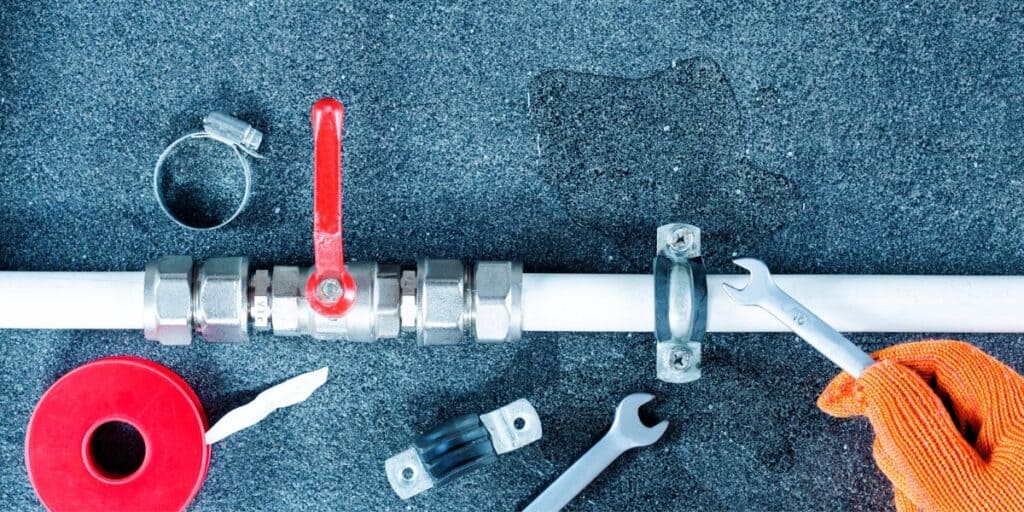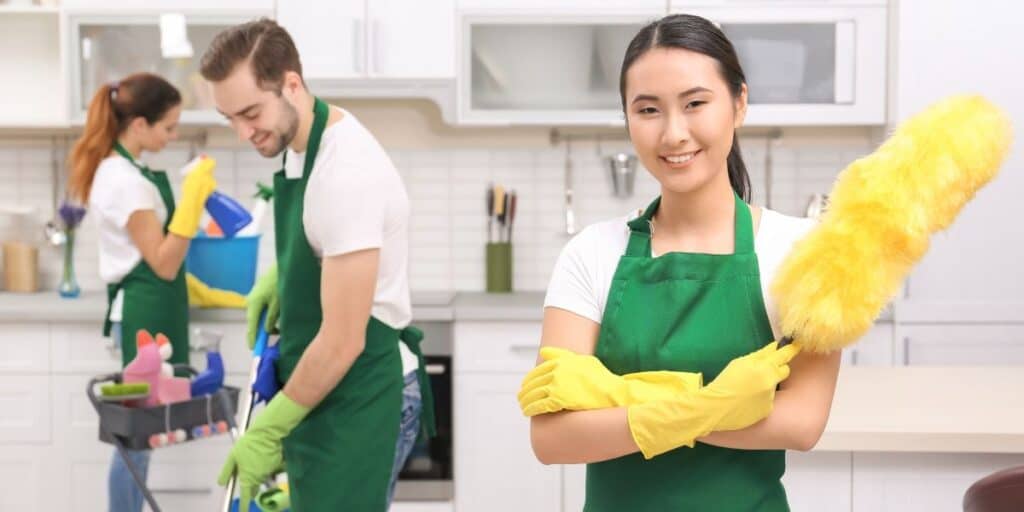Have you ever walked across your carpet and suddenly noticed a wet spot? It can be quite puzzling, especially when there seems to be no obvious source of moisture. Wet spots on carpets can lead to unpleasant odors, mold growth, and even damage to your flooring. Understanding the possible causes of these mysterious wet spots is essential for locating and resolving the issue.
The main reason your carpet could be wet in one spot may be due to a leak or a plumbing issue. Pet accidents and unnoticed spills are among other common causes of wet spots on the carpet. Such localized moisture can result in mold growth, hence you must address this problem immediately.
In the remainder of this article, we will dive deeper into other possible causes of wet spots on your carpet such as humidity changes, condensation, and flooding issues. We will also provide you with practical solutions to tackle these pesky carpet problems and help you prevent them from reoccurring in the future. So, keep reading to discover how to best deal with these damp dilemmas and maintain a dry and cozy environment in your home.
Possible Causes of Wet Spots

Leaking pipes are a common cause of wet spots on carpets. If you notice a wet area on your carpet, it’s crucial to investigate the source to prevent further damage. Leaks can come from:
- Burst pipes
- Worn-out copper water lines
- Damaged gutters
These issues may result in water seeping through the foundation and walls, leading to damp issues in your home.
Pet accidents could be another cause of wet spots on the carpet. If you have animals in your house, it’s possible that they’ve had an accident, leaving a wet stain on the floor.
Sometimes, a simple spill can be the culprit. Someone may have spilled water or another liquid on the carpet without realizing it.
Wet spots can also arise from external factors, such as rainwater seeping through the walls or foundation. This is often referred to as penetrating damp and occurs when water enters your home from the outside. Some key reasons for this include:
- Poorly sealed windows or doors
- Cracks in the brickwork or concrete
- Inadequate guttering or drainage
Issues with your subfloor may lead to wet spots on the carpet. Water leaks, flooding, or poor padding installation can cause moisture to build, resulting in damp patches on your carpet.
To determine the cause of wet spots, you’ll need to:
- Check for visible leaks, including burst pipes and damaged water lines
- Examine your gutters and drainage systems for blockages or damage
- Inspect windows, doors, and walls for cracks or gaps where water could enter
- Look for signs of pet accidents or spills, such as stains or odors
- Investigate the subfloor and padding for damage or poor installation
Once you identify the source, you can take the necessary steps to resolve the issue and ensure your carpet remains dry and damage-free.
Detecting and Locating Wet Carpet Areas
Detecting wet spots in your carpet is essential to avoid larger issues like mold, mildew, and damage to your flooring or furniture. Let’s explore some ways to identify these problematic areas in your living space.
Firstly, use your sense of touch to detect dampness. Simply walk around the living room, feeling for any wet or damp areas with your bare feet. Another effective method is to press a white paper towel on the suspected areas – if it picks up moisture, you’ve found a wet spot.
Visual inspection is also essential when searching for wet carpet spots. Look for:
- Discoloration or dark patches on the carpet
- Mold or mildew spots
- Bubbling or lifting of the carpet surface
Check for common sources of moisture, such as:
- Leaking pipes under the floor
- Excessive humidity or water spills
- Condensation build-up near windows and doors
To make the process easier, here are some tips to follow:
- Keep the room well-lit for better visibility
- Use a moisture meter to accurately measure dampness
- Conduct routine inspections to catch issues early
Remember, a wet surface on your carpet can lead to unwanted odors and long-term damage. Identifying and addressing these areas promptly will ensure a healthy and comfortable home environment.
Assessing the Damage and Deciding on Next Steps
Discovering a wet spot on your carpet can be both frustrating and concerning. First, it’s essential to determine the cause of the water damage. Possible culprits may include leaking pipes, damp ground near your foundation, or improper cleaning. You can do a quick investigation by checking the areas around your kitchen or bathroom for any visible signs of leaking.
Once you’ve identified the source of the moisture, there’s some steps to help prevent further damage and potential health risks:
- Take action to fix the leak as soon as possible. If it’s a plumbing issue, call a professional plumber. For foundation leaks, consider consulting with a waterproofing expert or landscaper to address the problem.
- Use fans and dehumidifiers to dry out the damp area as quickly as possible. This will help minimize the growth of mold and mildew.
- Consider hiring a professional water damage restoration service to clean and sanitize the affected area. They have the expertise and equipment to handle complex situations, especially if the damp area is extensive or hard to reach.
- Conduct a thorough carpet cleaning to remove any lingering moisture, odor, and potential mold and mildew growth. Trustworthy carpet cleaning services specialize in this type of situation and can help restore your carpet to its original state.
Remember, waiting too long to address the issue can lead to the growth of mold and mildew, which can impact your family’s health and necessitate costly repairs. Controlling the source of the moisture is crucial to preventing further damage to your carpet and maintaining a healthy living environment.
Using Appropriate Drying Techniques
Quick action is key when you discover a wet spot on your carpet. To effectively dry out the area, consider using a combination of fans, dehumidifiers, and other drying techniques. These methods will help prevent mold growth and minimize damage to your carpet.
- Increase Airflow: Set up fans, or even better, high-speed air movers in the room. Direct the airflow towards the wet area, ensuring continuous air circulation. This will speed up the drying process and reduce the risk of mold growth.
- Use Dehumidifiers: Invest in a dehumidifier to extract excess moisture from the air. This will help lower humidity levels, making it harder for mold to grow and effectively speeding up drying your carpet.
- Blot Excess Moisture: Start by removing as much moisture as possible. Gently blot the wet area with clean, white towels or paper towels. Avoid rubbing, as this can damage carpet fibers and spread the moisture to surrounding areas.
Once the wet spot is mostly dry, remember to ventilate the room by opening windows or using an exhaust fan. This will help remove any lingering moisture and odors.
For larger or more stubborn wet areas, it’s a good idea to seek professional help to ensure that your carpet is properly dried, cleaned, and restored. They can use specialized equipment and techniques to address the issue effectively and prevent further damage.
Preventing Future Wet Spots
It’s essential to prevent wet spots on your carpet to maintain its appearance and longevity. Addressing the underlying causes is the first step towards ensuring a dry carpet in the future. Here are some friendly tips to keep your carpet dry and clean:
- Check for leaks: Thoroughly inspect your home for any leakages, such as plumbing issues or faulty appliances. Repair all leaks promptly to avoid water damage to your carpet.
- Dry spills immediately: Accidents happen, but reacting quickly can prevent long-lasting issues. Use a clean cloth or paper towel to blot, not rub, spills as soon as they occur. Remember, the faster you act, the less likely the spot will be a permanent fixture.
- Take care during heavy rain: If you live in an area prone to heavy rainfall, make sure all windows are closed securely during storms. Pay extra attention to basement windows, as water can easily seep in and damage carpets.
- Use mats and rugs strategically: Place mats and rugs near entry points and high-traffic areas to absorb moisture from shoes and prevent wet spots on the carpet. Remember to clean these mats regularly, too.
- Invest in professional cleaning: Regular professional carpet cleaning not only removes dirt and allergens, but it can also identify potential issues that may lead to wet spots.
By following these tips, you can protect your investment and enjoy a clean, dry carpet for years to come.
When to Call a Professional?
Experiencing a wet carpet in one spot can be frustrating and confusing for any homeowner. Although some causes of a wet carpet might be a temporary issue, such as increased rainfall or a water spill, there are several reasons when you should consider calling a professional:
- A significant increase in your water bill: A sudden spike in your water usage might indicate a hidden leak or a plumbing problem. A professional plumber can help identify the source of the leak and provide advice on possible solutions.
- Persistent dampness: If you’ve tried drying the carpet yourself but the spot remains damp, this could be a sign of a deeper issue. Moisture could be seeping into your carpet from a cracked foundation, or you might have a local plumbing issue. In either case, a professional can help diagnose and fix the problem.
- Mold growth: A wet carpet can quickly lead to the growth of harmful mold and mildew. If you notice an unpleasant odor or visible signs of mold, calling a professional for inspection and removal is crucial. Mold can have significant negative effects on your health if left untreated.

Remember that, as a homeowner, it is your responsibility to ensure your home remains a safe, healthy, and comfortable environment. Consider the following points:
- Stay proactive: Don’t wait for a small issue to turn into a significant problem. If something seems amiss, investigate the situation and seek help when necessary.
- Trust your instincts: If you’re unable to identify the cause of wetness in your carpet, reaching out to a professional can save time and offers peace of mind.
By keeping these factors in mind and knowing when to call a professional, you’ll be confident in addressing any damp carpet situation before it escalates. Your home will remain comfortable, and you can rest easy knowing that potential issues have been resolved.
Frequently Asked Questions
What causes a wet spot on the carpet in my bedroom?
A wet spot on your carpet can be caused by various factors, such as a hidden leak, a damp subfloor, or high humidity levels. It is essential to identify the source of the wet spot to prevent further damage.
How can moisture appear on my second floor carpet?
Moisture on a second floor carpet can be caused by leaking pipes, a roof leak, or excessive condensation. It’s crucial to investigate possible sources and fix them to avoid mold growth and structural damage.
What factors can lead to dampness in carpets on a cement slab?
Carpets on cement slabs can experience dampness due to:
- Moisture seeping through the concrete
- Poorly installed vapor barriers
- High levels of humidity
- Leaks in walls or foundation
Proper installation and ventilation can help minimize these issues.
Why does my carpet feel damp in the winter?
During winter, your carpet may feel damp due to:
- Condensation from warm indoor air meeting cold surfaces
- Leaks in windows, doors, or walls
- Increased humidity from heating systems
Regularly ventilating your home can help reduce dampness.
Is humidity responsible for a wet carpet?
Yes, high humidity levels can contribute to a wet carpet by causing condensation and increased moisture absorption. Using a dehumidifier can help maintain appropriate humidity levels and prevent dampness.
What can make my carpet feel sticky and damp?
Several factors can make your carpet feel sticky and damp, such as:
- Spilled liquids not properly cleaned
- Residues from cleaning chemicals
- High levels of humidity
- Poor ventilation or moisture control
Identifying and addressing the specific cause can help restore your carpet’s condition.
